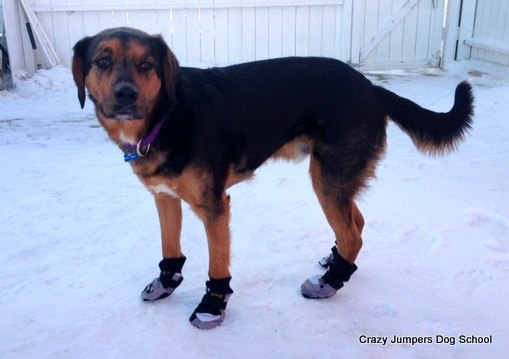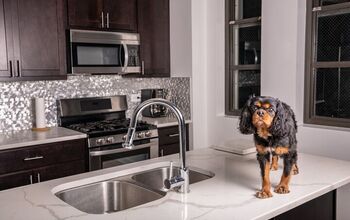Bootie Call: Bootie-licious Tips For Picking Out Dog Boots

If you want a straight answer, I’m not afraid to offer one up. For example, people often ask me if they should put boots on their dog, and my answer is always a resounding… “maybe.”
Let me explain.
Booties, when used properly on your dog, will help avoid or manage problems associated with your pooch’s paws. If your dog routinely suffers from uncomfortable ice balls between his toes, or struggles with small cracks or cuts to his paws, you should really slap some from booties on that dog. Your dog will also benefit from booties if he runs on hard, crystallized snow.
Related: Pawz Dog Boots Review
When used improperly, booties will do more harm than good. A bootie that’s too tight, not tight enough or not the correct height will cause nothing but problems for your pet.
On top of that, the question of which dog bootie is best needs some serious thought. Oftentimes, manufacturers design dog boots to appeal to the people, not the pets.
Related: Paws Jawz Review
I’m here to tell you that not all booties are created equal!
In order for a dog bootie to be effective, they need to:
Stay on: A bootie only works if it stays on. The biggest complaint I hear (and have) about dog booties is that they fly off when the dog starts moving at any speed. Look for a bootie that looks secure. Compare brands before you buy, look at the length of the strap, and how the manufacturer has designed the mechanism to tighten the bootie. People are scared to tighten the booties, due to the risk of cutting circulation off to the dog’s paws. Unless you are the Incredible Hulk, it’s going take some real work to get a bootie so tight that it cuts off circulation. When the weather is cold enough to warrant booties, you aren’t going to be outside long enough to risk cutting off circulation. Keep in mind that booties do need to go on tight, but don’t wrench them on – you could hurt your dog in the process. As well, never leave your dog unattended with booties on, and monitor his paws closely.
A bootie needs to have enough room for the dog’s toes to spread during walks or runs. Some booties seem to be designed to appeal to humans, not for dogs to wear. While these booties may look like a serious pair of hiking shoes, your dog has already been designed with some serious hiking gear – his paws. They work best when his toes can spread as he walks and runs. A bootie needs to be wide and flexible enough to allow the dog proper freedom of movement.
Do you have any dog bootie questions you’d like to ask? I’ve seen – and tried – them all! I’d be happy to share my experiences with you… just leave them in the comment section below.

Kevin Roberts lives for adventure. Together with his pack of rescue dogs and his husband, he spends as much time outdoors as possible. Kevin lives by the motto: "Get outside and play with your dogs!
More by Kevin Roberts

























